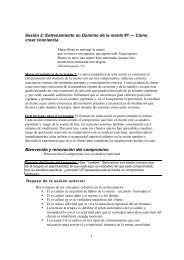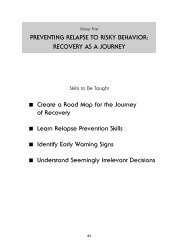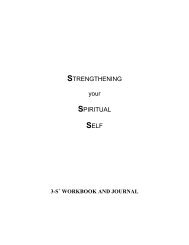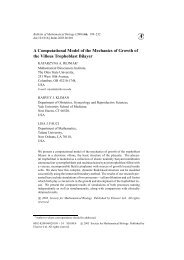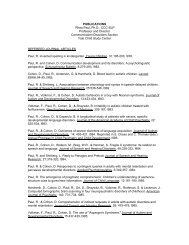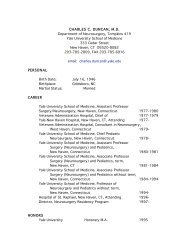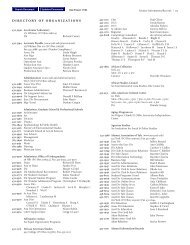The Spiritual Self Schema (3-S) Development Program
The Spiritual Self Schema (3-S) Development Program
The Spiritual Self Schema (3-S) Development Program
You also want an ePaper? Increase the reach of your titles
YUMPU automatically turns print PDFs into web optimized ePapers that Google loves.
actors, estimate the percentage of the time last week that you were able<br />
to experience and express your <strong>Spiritual</strong> nature while you were<br />
engaged in your habitual, automated, patterns of thinking, feeling, and<br />
behaving. An honest and careful assessment will allow you to progress<br />
more rapidly.<br />
Record.<br />
(a) Return again to your Habitual <strong>Self</strong>-<strong>Schema</strong> Worksheet and enter the<br />
percentage you just estimated that you were able to experience and<br />
express your <strong>Spiritual</strong> nature while your identified habitual self-schema<br />
was being accessed last week. Save your completed Habitual <strong>Self</strong>-<br />
<strong>Schema</strong> Worksheet to disk and/or print a copy and file it in your 3-S<br />
Journal.<br />
(b) Now go to the Reflections on the 10 "Perfections" Worksheet<br />
provided at the end of this text, and rate the extent to which the selfschema<br />
that was habitually activated during the past week (i.e., prior to<br />
beginning the program) enabled you to experience and express the 10<br />
qualities that are listed on the form (from 0-100%). In Buddhist<br />
traditions these qualities are called the 10 perfections (Pali paramis);<br />
however, they are qualities that are viewed as ideals in most<br />
spiritual/religious traditions. <strong>The</strong>y are provided here as examples of<br />
qualities or characteristics that might be used to describe an individual<br />
pursuing a moral, ethical, or <strong>Spiritual</strong> path, and to help you keep track<br />
of personal changes you make during your participation in the<br />
program. Use them to examine the compatibility of your habitual selfschema<br />
with your highest ideals, feeling free to add to, or modify, the 10<br />
qualities presented. When you have completed the Worksheet, be sure<br />
to print and/or save a copy, and keep it in your 3-S Journal (or folder).<br />
Step 5: <strong>The</strong> <strong>Self</strong>-<strong>Schema</strong> Check-In: Observing self-schema<br />
activation<br />
In Steps 1 through 4 above, you tried to identify the habitual patterns of<br />
an entire week. Most people find this very difficult. Indeed, the more<br />
one is on "automatic pilot" through life, the more difficult (and the more<br />
necessary), the task of self-monitoring will be. This next step will be<br />
somewhat easier because it will allow you to monitor your habitual<br />
21



